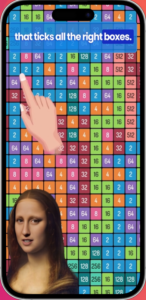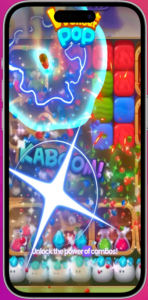
The momentum engendered by ChatGPT and a boom in AI has brought with it a number of AI and ML startups whose founders claim to offer a wide range of services, from very human-like avatar creation to full-service marketing departments. Within what is already becoming a crowded sector, a few promising technologies have come into the fold.
One such startup that at least deserves a closer look is Creative.ai: Its platform is used to create video game ads based on the organization’s business goals. It is designed to offer a near-complete gamut of services, including creating the ad content that — with the help of the algorithm — is designed to maximize click-through rates and ultimately, ROI generated for each ad, the company’s founder says.
“We have API connections all across the data so the guesswork is removed from ad creation,” says Creative.ai cofounder and CEO Athar Zia, who is also the CEO and cofounder of BLKBOX.ai and a former Facebook (now called Meta) Ads Auction Expert. “Some people are going to even use the platform for ideation to say, ‘hey, what’s going to drive people for click-through rates?’”
The machine learning aspect of Creative.ai’s algorithms involves scouring successful video game ad campaigns and drawing inferences for ads that correlate with proven market results. These machine learning aspects involve strategic insights and market research and audience analysis, including ads that have worked well for the competition. Testing and optimizing assets often leads to actionable insights, Creative.ai explains.

Much of the work associated with video ad creation requires what Creative.ai says is menial and repetitive tasks, representing 70% of creatives’ time. The idea is for the bot to do the boring and mundane stuff so that the creative department can get down to work and come up with new ideas and concepts. Without the help of an AI-assisted platform such as the one Creative.ai provides, the company says, creative teams can spend weeks or longer to determine whether a creative concept might be viable or not. Producing an ad today typically requires a team of 3D artists and motion designers and a data science and acquisition team to help determine the best content to engage with the audience. The majority of these expenditures and required resources can be removed with the use of Creative.ai’s platform, the company says.
Finding out what successful video game ads have in common is a major exercise in number crunching and therefore a perfect task for AI, Torsten Volk, an analyst for Enterprise Management Associates (EMA), said. “The AI ingests the state of each pixel in relation to all other pixels at every point in time and then identifies which of these pixel combinations lead to the highest install rate for different types of games. Fine tuning with organization-specific ad performance data should further increase accuracy,” Volk said. “This also enables the AI model to ‘figure out’ how much variation of a successful previous ad is necessary for this success to carry over to a new campaign, without decreasing performance by giving prospects the impression of ‘recycled’ content.”
The AI model can leverage assets of the new game, combine them with previously successful assets and create new ads that are sufficiently different from previous ones — but that are also similar in all the right places to maximize the probability of success, Volk said. As the company explains, neither the analysis nor the process of creating new assets out of existing ones are thrilling tasks for us humans. It can even be demoralizing as there may not be any correlation between the artistic value or sophistication of the ad and its success, Volk said. “This is exactly the iterative work that can be left to generative AI models, while humans can work on ideas for the next big video game. Conceptually, creating ads based on generative AI is the same thing as using generative AI to create new text out of existing text assets,” Volk said. “It could be hugely impactful by taking many chores out of video production. Next, it would be interesting to see if AI could ‘watch’ an entire movie to tell the producers if they need to go back to the drawing board.”
Onboarding with Creative.ai’s platform can be completed within hours and is designed to be simple so that ad creation can begin without the user having production experience. “The generative AI is quickly applied to the business to deliver meaningful messages,” Zia shared.
A key hallmark of Creative.ai’s platform is that the AI generated ads are based on previously created content that belongs to the organization. This begs the question of how a video game maker can begin to create its first ad. For that task, Creative.ai has a creative director and team that customer organizations can work with to get started. Once the first ad is created, future ads that meet the organization’s goals for its brand are AI-generated. This helps to remove copyright concerns since AI-assisted algorithms create ads from existing content that the user organizations already own — unlike, say, ChatGPT that gathers content from numerous and various sources both potentially copyright-protected or not. With the Creative.ai system, every pixel created already belongs to the organization, Zia said.

The copyright protection aspect of the Creative.ai platform is important because it curbs the risk of lawsuits, such as those filed against GitHub for allegedly building commercial closed source AI models based on materials that are available under open source licensing agreements, Volk said. “While we are still at the beginning of figuring out the legal implications of generating new content based on content we do not own, it certainly sounds preferable to not even open up this can of worms by training or at least fine tuning AI models based on an organization’s own content,” Volk said.
Competition does exist. Startups like Stable Diffusion and Midjourney offer AI APIs that can create beautiful ads based on a prompt. The difference is that these and other alternatives — others will almost surely offer similar alternatives — pose challenges, Zia said. “We are instead at the point where brands and advertisers can take the content and say, ‘I’m going to represent my company based off that.’’’
Additionally, since Creative.ai’s source code is proprietary, it removes concerns that the code might have been used before to create concepts for which other organizations might own.
“If it’s open source, and I take concepts of that open source code, am I going to be liable for the copyright holder who owns the rights to this concept?” Zia said. “Our system is in a closed ecosystem, meaning for every advertiser, the AI is trained on the organization’s system. It’s all compliant and brand-safe — there are no legal issues.”


